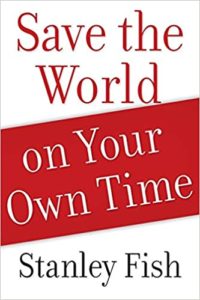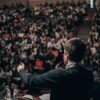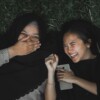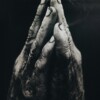
Save the World on Your Own Time

Education’s End: Why Our Colleges and Universities Have Given Up on the Meaning of Life

Debating Moral Education: Rethinking the Role of the Modern University

Christianity and Moral Identity in Higher Education

Seeing the Light: Religious Colleges in Twenty-First Century America
America is a very moralistic country, with entire cable channels devoted to gossiping about moral lapses and crime. Our colleges and universities, by contrast, have a reputation as value-free zones, with professors who refine their skepticism about value judgments and students who are indulged in whatever behaviors they choose. This is how we train our future leaders.
It is natural, therefore, that there should be an ongoing debate over “moral education” in our colleges and universities. We hear of a “return to ethics,” at least in the sense of some discussion of the place that ethics might have in our new-model “corporate” universities. Given the recent record of some political and business leaders, the state of our entertainment culture, the growing social problems that we lack the courage to face, many imagine that capturing the minds of college students is how to begin to turn things around.
One easily can imagine such a debate turning banal. But the five books under review here indicate some growing sophistication, even when they indicate differences among approaches. One will not find the stridently “correct” demands of the 1980s, the calls for speech codes, or the radical critique of traditional education that wore itself out in the 1970s. Our authors try to engage us from inside our present institutions rather than from the fringes.
Take Stanley Fish for instance. Fish is always interesting and challenging, and for those who agree with him, the argument over moral education or character formation in colleges and universities need not take place! The theme of Save The World On Your Own Time (2008) is that moral or political advocacy is out of place in colleges and universities. Colleges should be defined by their educational function, which Fish sees as fairly narrow. And while he does not talk about moral or character education specifically, he can see it only as advocacy. Such an uncompromising position, argued clearly, at least will set the bar for the other books to be considered.
Fish’s austere idea of education is that it introduces students to bodies of knowledge and kinds of inquiry and to analytic skills that will enable them to contributeto that same knowledge. His own field of English literature and composition is essentially the study of stylistic effects, genres, meters, verse forms, novels, romances, and epics in order to see what authors meant and how they expressed it. So education stops short of arguing with Milton or calling him names. Since colleges and universities are supported as educational institutions, their function should be limited accordingly. This will not leave time for professors to become “moralists, therapists, political counselors and agents of global change” (14).
There is much acute analysis and wise counsel in Fish’s book. It includes sensible and entertaining discussions of postmodernism, of academic freedom and freedom of speech, of the current attacks on academic funding, of why administrators deserve sympathy, as well as of those attempts to politicize the enterprise. All these are argued in the thorough and rational manner that Fish recommends to the academy generally, giving us examples of the reasoning we should be mastering.
He brushes past ethics, saying, “Analyzing ethical issues is one thing; deciding them is another, and only the first is an appropriate academic activity” (26).Truth is the prime, perhaps the only, value appropriate to the academy. Yet Fish documents how schools from Yale on down have professed a duty to improve its students and the broader society—whatever they may do in practice. He is happy to quote several of his own critics, who are shocked at the political irresponsibility of his position.
While we may not quarrel with Fish’s rejection of politicizing instruction, we might question his definition of the university. When he admits, in an aside, that there are “avowedly sectarian universities,” he is acknowledging a broader definition. He may think that a sectarian college is not about education at all, but rather about acculturation. Still, this distinction suggests that the question of university function is sociological as well as semantic. It is clear that America’s universities are largely about professional education, like it or not. Well over half of my own university, which is one of the biggest, will take their bachelor degrees in professional programs, and eighty percent of graduate students take professional degrees. Fish does not think professional training qualifies as academic if it is only a training in job skills and if it does not inquire into its sources or justifications. But what if professional training did look into those matters?
I have argued elsewhere that since professional education is always in the service of some human good, a consideration of that good should be integral to all such programs. Whether Fish’s favorite course on Milton would be any help in such a consideration is a question. While professional schools should not tell their majors how to decide all the issues they will face, they should explore the possible answers and discuss them on their merits. And since the end of this process necessitates choice, there is an unavoidably ethical element in professional education.The possibilities are bound to include some that are grounded in religious commitments as well as more utilitarian ones. I do not think Fish would be shocked at this having defended religious voices in the academy often.
The other lack in Fish’s analysis is something that C. S. Lewis discussed in The Abolition of Man. It is the fact that separating the life of the mind from the life of the emotions is artificial. Emotions can be true or false. They may be reasonable or not, and therefore can even be taught. Emotions are the motive force behind moral behavior, binding personal energy to intellectual judgment. If we were disembodied minds, things would be different. As things are, feelings help validate the natural law, or what Lewis calls “the First Platitudes.” What Fish thinks is incontestable—the autonomy of reason—may be conceived too narrowly. That commitment is itself a moral judgment.
So where do Fish’s imperatives come from? He says that students should not be engaged in “an inquiry about what kind of person they should be but an inquiry about what kind of person Plato or Hobbes or Rawls or Milton thought they should be, and for what reasons, and with what poetic or philosophical force”(103). But students cannot help being motivated by existential questions in studying these voices. A class could not hold their attention if they could not ask who they agreed with.
Fish’s position will have to confront religious viewpoints on the ethical dimension in education. His devotion to the classics might be met with Pierre Hadot’s challenge to a narrow scholarship. The ancient Greeks, Hadot argued, thought of philosophy as a way of life, and not simply a technical, academic specialty. Recovering such an ideal for the modern academy was a hope of Michel Foucault, whatever the use he made of it.
Fish’s view of the academy may be too polarized. He does not see connections between advocacy and academic analysis. But they form the actual content of theliterature he teaches. After appreciating the skill of authors, or their failure, there is still the question of what they were saying. Must we cut off discussion of that for fear of disagreement, or because this is where students and teachers are on a level field? He has said how much he despises discussions that begin with “what did you think about this reading?” But if it is not the first question, it could well be the last that students face. Maybe we do not want to spend class time on it, but to suggest that it is illegitimate or juvenile is puzzling.
In short, Fish has a blind spot. He shows no interest in the larger culture of our colleges and universities. He may be a close reader of texts, but he cannot be a close reader of the campus to think the trouble comes from ideologues or radicalized students. Fish thinks that the academy should not venture beyond the limited tasks we are equipped to perform. But surely our colleagues should be expected to have some sense of the social significance of their knowledge.
As Fish finished his book, he became aware of Anthony Kronman’s Education’s End: Why Our Colleges and Universities Have Given Up on the Meaning of Life (2007)and tried to fend off Kronman’s challenge to his thesis. For Kronman made an eloquent appeal to the academy to address precisely “the meaning of life” that Fish said you should take up “on your own time.” Kronman, formerly dean of Yale’s law school and with a philosophy Ph.D., remembers his years as a student at Williams College in the 1960s. The high point was a class which showed him that “the meaning of life is a subject that can be studied in school” (5). Since it is “a teachable topic” (6), he is dismayed that academics dismiss it as if it were juvenile. To him, all other questions seem trivial by comparison.
Kronman’s first task is to explain how we have created the dysfunctional system we have today. Why is it dysfunctional? Because “churches now monopolize the authority to address [the question of the meaning of life]” (7). Fish had suggested that thinking persons might well go to parents or churches to learn what life is all about. Kronman cannot be so cavalier about the threat from the religious establishment. How does one identify the meaning of life? Kronman expresses this in several ways. “What, in the end, should I care about?” (23) What would I be willing to die for, as Socrates did for philosophy, and Jesus did for humanity? “One cannot live a meaningful life unless there is something one is prepared to give it up for” (26-27). He talks about ultimate concern, ultimate care, and ultimate value. Accordingly, he admits that these are essentially religious questions. They cannot be answered objectively but “must be taken on faith” (34). Admittedly, this is why some philosophers do not think they are real questions. Kronman hopes that colleges and universities have some resources for addressing such existential questions.
But first, how did things go wrong? Principally, by adopting the “research model” of the German universities back around 1865—the model that Fish approves. In their enthusiasm for discovering truth, professors began to forget that education had always been about shaping minds and character. Older colleges had tried to do that by reading the classics, not for their style but for content. The research ideal disassembled those classics and distanced us from the societies that produced them. Then in the 1970s, a second thing went wrong when “political correctness” took over humanities departments. In a nutshell, political correctness means that any claim about human nature is artificial, “an expression of power in disguise” (88). Thus, Western ideas about human nature or human values are being rejected as dogmas. They are seen as limiting us while also offering us power over others.
Political correctness is defined by Kronman as an amalgam of diversity, multiculturalism, and constructivism. He shows how it was meant to justify the humanities in the face of their physics envy. But it has destroyed what little was left of them. Humanism was always to liberate us from our natural ignorance and prejudice, but it is now criticized as oppressive. Meanwhile, pretending to be non-judgmental, political correctness silences any open discussion of values. For when every tradition must be considered equal, and above criticism, there is nothing to discuss.
Kronman is enough of a relativist to acknowledge that each civilization has its own canon of foundational works. Every culture needs to develop from its own roots. But it is important to recognize that the various canons do not intersect with each other. Trying to transcend cultures will not lead to a broader conversation. So why let others silence any discussion of our own? Indeed, why can we not require study of our own, for those who come to us for wisdom?
Of the two threats, Kronman thinks the research ideal poses the bigger challenge. Political correctness has had time to discredit itself. But the research ideal has become unchallengeable, making life questions seem unprofessional, unreal. Beyond that, the prestige of science, and especially technology, has made us question the mortality that has always raised existential questions. Kronman’s discussion of mortality as the cornerstone of meaning is perhaps the most arresting part of his argument.
Kronman’s somewhat desperate plea is that we revive the “secular humanism” that emerged in the late nineteenth century, after religion was undermined as a guide to life and thought. By secular humanism he does not mean a tightly-defined doctrine or a set of propositions. The “ism” form of the word is misleading. He means an open and pluralistic but very serious discussion. He means “to explore the meaning of life in a deliberate and organized way even after its religious foundations have been called into doubt” (74).
For Kronman, secular humanism is not just liberal individualism. It involves acknowledging certain general truths about the human, and arguing one’s views seriously. It acknowledges that there are common elements in human nature, that human diversity has recognized patterns, and that our ultimate search may transcend this world. So the secular humanist search is quasi-religious, and he even frames it in a creed: secularism “acknowledges the ultimate [sic] pluralism of values, while insisting on the intelligibility of the idea of human nature and the durability of its most compelling expressions” (200).
Accordingly, religion is still a part of this search, in its seriousness, reverence, allegiance, gratitude and responsibility, but not in its characteristic conclusions. Seen as human creations, religions must be kept in their place. Parts of the Bible and numerous religious authors are in the Yale Great Books curriculum that Kronman appends. But secular humanism expands the Western canon beyond the last Christian contributions. When Kronman said that religion was “called into doubt,” he meant it was gone, surviving only as a transcendental seriousness.
On page 198 his real feelings about religion come out. First, religions cannot allow doubt or questioning, or admit pluralism or tolerance. So in his view all religions are dogmatic. A religion that denied the possibility of certainty, he says, would not be a religion. Second, all religions demand a sacrifice of intellect. He is talking about “faith,” of course. Thinking is one thing; believing is another. These two characteristics make religion unacceptable in the academy. Kronman views religions from a distance and makes no distinctions between them. His sources for these judgments are the websites of Oral Roberts, Regent, and Liberty universities.
Greater familiarity would have shown him that there are elements in Christianity, for instance, that work against dogmatism. Some Christian traditions express themselves in narratives, devotions, liturgies, and rules, rather than dogmas. Those different traditions may differ in how widely they expect their theologians to go in discussing the paradoxes of the faith. They vary in how much they leave as mystery.
As for faith, Kronman seems to think it comes after or instead of thinking. Recent philosophers have recovered St. Augustine’s view that faith comes at the beginning of any rationality. Any successful search must have an idea of what it is looking for and of its significance. So rationalities are based on assumptions, which might be called faiths. That is, they are grounded in one’s basic personal and intellectual orientation, the source of one’s values and hopes.
Christians might not be impressed with Kronman’s critique of religion but could still identify with his diagnosis of the university’s failures. And they should consider especially one point that he makes. He says that churches have failed to develop intellectually because our weakened colleges and universities have not mounted a coherent secular humanist challenge recently. This implies clearly that churches would be more important in our intellectual culture if they engaged with academic questions, and did not just defy or demonize secular colleges and universities. Science has created a void of meaning which religion now is filling. So in the end, “the crisis of spirit we now confront is a consequence not of the death of God, but of man” (237). Questions about the human are what our colleges and universities are not dealing with, but they are the place to start reform. So ethics should permeate the curriculum.
Kronman’s book offers a very able and lucid critique, but it seems quite ineffectual. The university of his dreams looks very much like Yale or like that ten percent of Yale that opts for his Great Books program. He is reduced to pleading and begging, which does not even seem as effective as the shaming and scolding that Fish offers. Unfortunately he has missed two opportunities. He could have appealed to those in the religious population who share his concerns about issues of the human good. And second, he could have shown that professional education is the place where issues of the human are most inescapable. So he failed to engage two large constituencies—churches and professional education—that would have a stake in his proposals.
It is hardly Kronman’s fault that he cannot see the possibilities for rapprochement with a Christian humanism. Christians in America do see some of the practical issues regarding the human, in reference to abortion, euthanasia, cloning, hybrids and the like. But they have backed off from the sort of humanism that an “incarnational anthropology” would suggest. The church parted company with humanism when it veered toward an aggressively anti-religious naturalism. Kronman is not in that camp. If his secular humanism means only an unbiased search for life’s meanings, Christians could contribute much to such a search.
By contrast with Fish, Kronman sees the possibilities and responsibilities for colleges and universities to engage with moral issues. While Fish would only allow the objective consideration of ethical philosophies, Kronman’s discussions of the “meaning of life” would raise the issues of character formation.
Elizabeth Kiss and Peter Euben’s Debating Moral Education (2010), which originated in a conference at Duke, covers much more ground than the books we have thus far considered. No actual debate develops in the course of the book, but it surveys many of the issues surrounding its subject. It seems a good place to start if only for the editors’ wide-ranging introduction and Julie Reuben’s brief history of moral education in our colleges. None of the contributors is about to advocate ethics requirements, more speech codes, a list of social or environmental goals, lessons in civics, or the old multicultural agenda. Instead, they recognize that moral education goes on everywhere, whether we like it or not, and whether we recognize it or not. Even “value-free education” represents a value, after all. So the authors have got to a second, more sophisticated level of discussion. They are not afraid to advocate what they think is desirable, recognizing that even those who oppose an ostensible moral education do so for moral reasons of their own. In effect, avoiding ethical discussion would simply be to accept the dominant moral culture.
Stanley Fish is allowed to lead off the discussion in order to be inclusive. He is cavalier in dismissing the academy’s social role during students’ formative years. But his point is that the value of truth, by itself, gives the academy enough to do in the way of character-formation, a point seconded by James Bernard Murphy. Murphy reminds us wryly that Jefferson became the father of political correctness by bowdlerizing texts in his college libraries. Their point, then, is that truth is the very essence of what colleges and universities are about in a society where it is our most crying need. They are confident that academic training is better moral training than a more ostensible approach. Ruth W. Grant offers the most searching critique of this academic or “liberal arts” approach to character formation, reminding us of the skepticism of Jean Jaques Rousseau, Edmund Burke, and Aristophanes.
An initial exchange with four critics of Fish (Stanley Hauerwas, Elizabeth V. Spelman, and the editors) repeatedly raises the question of how widely we conceive of colleges and universities, whether they are strictly educational institutions, liminal spaces in the life course, training grounds for democracy, or graduate programs in socialization. Must we give some attention to students’ bodily and emotional lives (which probably occupy them more than their studies), and could sports do more for character development than Rawlsian analysis of situations (David A. Hoekema, Michael Allen Gillespie)? How important to student development are college and university staffs, peers, advisors, student leaders, counselors, the internet, and that cell phone tether to home?
The general view is that liberal education is the natural locus of ethical considerations. But it is good to see Hoekema, Julie Reuben, and the editors suggest that professional education is the more natural place for ethical questions, a point that Harold Shapiro and this reviewer have made elsewhere (See also Bobby Fong, “Looking Forward: Liberal Education in the 21st Century,” Liberal Education 90[2004]). Given the growth of and institutional focus on professional programs and student commitment to them, this could give the issue of human needs and moral response a powerful push. Courses in the “human meaning of (name your profession)” could fill in a blank within our colleges and universities.
The collection is better at raising questions than offering answers. But some authors (Stanley Hauerwas, Wilson Carey McWilliams, and Susan McWilliams) ask us to consider the bigger question of how we justify colleges and universities in the first place, whether in political, economic, social, personal, or even religious terms. In the moral realm, do we expect them to be more engaged in cultivating the moral imagination, fostering moral character, building moral community, or engaging different moral viewpoints? At least the authors agree that the method will be dialogical rather than didactic.
Perhaps the most intriguing idea was Donald Moon’s suggestion of invoking “common bads” (a la Michael Walzer) rather than searching for common goods. The psychology of college students (with Erik Erikson the authority commonly invoked) might be better engaged by such in direction. Whether it was the atmosphere around Duke or a part of the academic zeitgeist, Aristotle was easily the most cited author, with Kantian and utilitarian perspectives much less in evidence.
Perry Glanzer and Todd Ream’s Christianity and Moral Identity in Higher Education (2009) encourages Christian colleges and universities to set an example in moral formation. They start from the important point that inevitably, secular institutions represent particular traditions, as do religious colleges, and are never neutral in this regard. Just in order to operate institutionally, they must have a corporate culture which urges the proper ways to relate to others and to subject matter. Indeed, current concerns about race, class, and gender have brought moral commitments to the fore. Student radicals as far back as the 1960s showed the deficiencies of academic rationalism, as they mounted attacks regarding civil rights, war, women’s rights, and the academy itself. They appealed to moral positions that administrators only managed to engage in legal terms. So claims that religious institutions “impose ideas,” limit autonomy and diversity, and do not allow “critical thinking” could be turned against secular institutions as well. In the end, critical judgment on any particular moral tradition must come from another particular moral tradition. All institutions must decide what is important to them and what is not. Even Stanley Fish must decide what makes a desirable curriculum before he can commit us to it.
Those within a dominant value system seldom will see it as a particular tradition, but will imagine it as the rational, natural, obvious order of things. This is the position of those who still imagine that the college or university can be value-neutral and objective. In fact, Glanzer and Ream think our colleges and universities now house several partial (“less than human”) moral models of moral education—a political, national, ethnic, racial, gender, liberal, military. They would like to offer a more comprehensively “human” good, which they think religious colleges and universities can promote as well as anyone.
Within their theoretical discussion is a brief report from their survey of 156 religious colleges and universities, ignoring some more simply rule-oriented institutions. They group them into Christian Humanist (deriving ethics very consciously from theology), General Christian Ethics (using religious language in a general way), and Comprehensive Christian Identity schools, which are notable for having integrated theology, service, personal virtue, and broader social justice issues. Catholic institutions are characteristic of the first category, evangelical Protestant ones more typical of the second. Two schools from the last category—Calvin College and Eastern Mennonite University—are described at length.
Glanzer and Ream are clear that the concerns of Christian institutions should be about the human, and not about a narrow range of sectarian rules or doctrines. Like Kronman, they fault secular universities for giving up on the concept of the human, and for acting like producing character is someone else’s business. In 2007, Harvard declared that its job was to “unsettle” students morally, so it could “help” them reorient themselves. Absent the promised help, this sounds like a rationalization justifying the general skepticism they produce. Abandoning the individual to “self-determination” may be demanded by America’s liberal ideology. But we need to face up to the fact that character underlies democracy and even bureaucracy, as well as each of the professions. A sense of personal identity—such a problem these days—necessarily means moral identity, an orientation toward values. So the authors’ point is that moral education is not promoted by minimizing our particular ethical traditions (the Enlightenment approach) but often by maximizing them.
In theoretical terms, Glanzer and Ream do not think that moral reasoning (our current tradition) is complete without attention to moral sensitivity, moral motivation, and moral character. The cognitive-liberal approach to moral decision making neglects the moral orientation of persons, and their emotional, physical, cultural, and spiritual dimensions. They propose that we think of moral education in terms of human potential or redemption, which suggests religious understandings. This shifts the focus from situations to students, toward their development rather than their knowledge. Critical thinking must involve not just the situation, but also “who” the actors are in all their particularity. This leaves a Kantian approach behind. They sum up their discussion of Augustinian, as well as modern, thinking by saying that ethics “involves the ordering and informing of one’s loves with regard to one’s various human identities” (200).
Glanzer and Ream’s theoretical discussion could benefit from more specific examples, but their discussion of Calvin and Eastern Mennonite indicate how some have wrestled with their religious and ethical responsibilities. Calvin is viewed as distinctive for its emphasis on engaging the world through every academic discipline, and in its foundational narrative of restoration, redemption, renewal, reconciliation, reclamation, and so on. Eastern Mennonite’s counter-cultural approach is also very socially conscious, or even world-conscious. These two gave the authors their best examples of relating theology and curriculum, and also of integrating the curricular and co-curricular areas.
Finally, there is some confusion in the authors’ discussion of the place of honor codes within moral education. It should be pointed out that honor systems originate as an aspect of reputation, not of morality, and depend on a community intimate enough to give weight to sanctions. This is why they do not work in colleges and universities. Thought of as moral systems, such honor codes do suggest at least an appeal to ideals as well as rules, as well as a voluntary adoption of the code.
Samuel Schuman’s Seeing the Light: Religious Colleges in Twenty-First Century America (2010) debates the issues concerning moral education in our religious institutions, but gives us a chance to see how salient the issue is among their general concerns. It is the more valuable for being written by a Jewish professor (of literature) who had taught and administered at secular institutions. He remembers being offended by a colleague’s committee-room reference to “two-bit Bible colleges,” which had passed without challenge. That put it in his mind to visit some religious colleges to see what they were actually like. And so we have this leisurely, engaging, and very understanding treatment of thirteen Protestant and Catholic colleges (with Brigham Young and Yeshiva for comparison).
The colleges and universities were chosen for their range of approaches and attitudes, and all were shown to be succeeding in their different ways. For Schuman had noticed that applications to religious colleges and universities are rising in general, sometimes dramatically. He is interested in what they are rather than what they are not, and in why they deserve respect on any criterion. Some are good-sized (Baylor, Oral Roberts, Villanova) and some are tiny (New Saint Andrews, Thomas Aquinas). Some are in secluded settings (Westmont, Northwestern College, Anderson (SC)) and others are in urban settings (College of New Rochelle, North Park). Calvin, Wheaton, George Fox have been profiled frequently in such surveys.
Schuman notes that, while by 1970 “the engagement of the Protestant church with American higher education had collapsed” (35), some more intentionally evangelical colleges and universities were defying James Burtchaell’s characterization of The Dying of the Light (whence Schuman derived his title). He shows how the institutions he visited were giving much thought to their goals and methods and what they had to offer to the world—more reflection on such matters than we have come to expect of secular colleges and universities.
Rather than being impressionistic, Schuman took a standard list of questions on his visits (Appendix) so that he could have some precision in description. Of course, secular observers would be greatly concerned about the colleges’ restrictive rules of student conduct. And those behavioral expectations are relevant to an interest in moral formation. Schuman found that the colleges were not satisfied with prohibitions, but tended to couch things in terms of aspirations. Failures were more likely to bring counseling first—ideally by fellow students—than penalties. While none of his colleges and universities would have allowed an abortion rights group to organize on campus, he found that none would prohibit their students from joining one off campus. It is of interest that almost all of the colleges and universities had students who were recognized as unbelievers, but who did not find that a reason to leave.
Besides the conduct codes, usually course requirements included formal instruction in ethics and often included some sort of seminar which could take up ethical or existential questions at length. None of Schuman’s schools were unwilling to allow discussion of difficult issues. He alludes to the difficulty secular campuses have in allowing certain discussions, whatever their reasons. He also cites extensive national surveys that suggest that religious colleges and universities do not change their students’ religious views very much either way.
The other concern that secularists might have in assessing religious education would be the possible restrictions on faculty. What is the state of academic freedom in such institutions? Religious educators address this subject now by the phrase “integrating faith and learning.” Schuman got at this issue by asking faculty and administrators, “Can there be Christian literature courses? Psychology? Chemistry? Physics?” (259). He found that they had ready answers, because all the colleges and universities had required every faculty member to put their thoughts on such “integration” down on paper. Schuman found the answers diverse, though he does not make them sound particularly profound. Some handled the question in terms of the relation of beliefs to behavior. Others thought it concerned the uses to which one could put one’s knowledge. Some saw parallels between disciplinary imperatives and religious doctrines. A few seemed to sense that the most basic academic assumptions can be seen as intellectual commitments and effectively faiths.
Schuman does not take this hint that secular scholarship also relates to foundational assumptions. Given the marginal nature of religious instruction in American culture, religious faculty are probably more aware of their (“deviant”) assumptions. The more hegemonic culture would be less likely to have problematized its assumptions. So it simply can frown away religious perspectives as aberrant.
Clearly Schuman finds the goals and methods and even the assumptions of his religious colleges and universities to be sensible. He believes the education they provide compares with that of secular institutions and can prepare them for the most demanding graduate schools. Some of them strike him as true leaders among American colleges and universities. And sometimes he indicates that he sees some lack in secular education. Such concerns seem to him to center on the failure to address the ethical issues connected with our knowledge and training.
What may we conclude from such debate and exploration as we have seen? That concern over the moral dimension of higher education has reached the attention of prominent academic publishers. But it seems also that the subject of moral education still seems separate from the other aspects of education, such as science and professional education, and from our colleges and universities’ research and therapeutic goals. It does not yet reach the heart of colleges and universities, but exists on their fringes.
The failure is not in the thinking given to the subject, but in the universities, which are unable to change their assumptions. The ways they are funded, the demands of students, the distractions of faculties, and the scholarly traditions of almost 200 years’ standing, make serious change unthinkable. And this despite obvious concerns about the state of political, professional, and personal morality in American institutions. This disconnect will tend to marginalize our secular colleges and universities further as society finds other resources to address our ethical concerns.
Meanwhile, religious colleges and universities can be true to their different visions of integrating ethical and academic and religious concerns. That cannot be simply a matter of returning to older arrangements, of course, but of continuing to work toward new methods and understandings. In this, religious education has something to offer to our society whatever recognition it is accorded.























